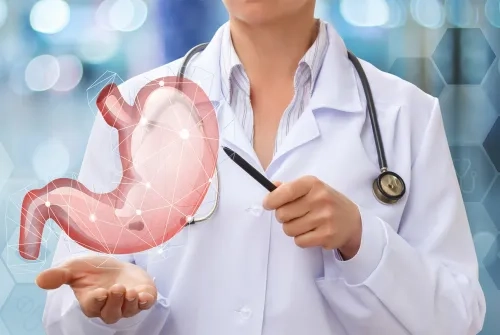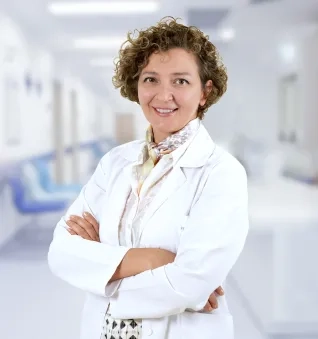Alo Yeditepe
Alo Yeditepe
Fundoplication Method / Endoscopic Reflux Treatment
What is Reflux Disease?
Gastroesophageal Reflux Disease (Gerd) is a disease that affects almost 25 percent of the population. Typical complaints include chest and throat burning, as well as a bitter aftertaste in the mouth. Gastric acid leaking into the esophagus caused by the relaxation of the structure (sphincter), which is made up of the muscles that are tight between the esophagus and the stomach, is the primary condition that makes up the disease.
Gerd is a chronic disease. The use of acid-suppressing drugs usually provides relief. When pharmacological therapy is discontinued, however, problems often start up again in patients.
Why Endoscopic Fundoplication?
The permanent treatment of Gerd is to narrow and strengthen the loose sphincter and make it functional. This technique involves suturing the sphincter endoscopically to strengthen it. There will not be any incisions on the skin. Intact stomach tissue is stitched to the loose area at the lower end of the esophagus using a suture material we can refer to as a medical "staple" by penetrating through the oral tract with a special endoscope. Thus, acid leakage is prevented.
Who Is a Candidate for Endoscopic Fundoplication?
Individuals over the age of 18 who require ongoing medication use and have sphincter laxity of less than 3 cm (without hiatal hernia) are candidates for treatment.
How is Endoscopic Fundoplication Performed?
In the endoscopic room, the procedure is performed while the patient is completely asleep. It takes about 60-90 minutes. Following the operation, a liquid diet must be followed, and soft foods must be consumed until healing is complete. You can resume a regular diet and your normal activities in a few days. The patient doesn't experience any pain since an anesthetic is utilized throughout the surgery. Throughout the next two to three days, there can be slight stomach or throat pain.
How Successful is Endoscopic Fundoplication?
- Following the operation, 80% of patients who regularly took acid-suppressing medications ceased doing so within the first year.
- After 4 years of impression, 75% of these people continue their lives without taking any medicine.
- A success rate of 72-78% is achieved without the need for surgery.
- It has FDA and C certificates and has been performed on thousands of patients all over the world for 8 years. Applicable only by specially trained Gastroenterologists.
This content was prepared by Yeditepe University Hospitals Medical Editorial Board.
”
See Also
- What is a Liver Transplant, How is it Done? and Who is it For?
- What is Constipation? What Helps With Constipation?
- What is Hepatitis B? What are its symptoms? How is it Transmitted?
- How to Cleanse the Liver the Fastest?
- Who Gets Colon Cancer?
- What is Colostrum? What are the Benefits of Colostrum Milk?
- Stomach Cancer Causes, Symptoms and Treatment
- What is Colon (Intestinal) Cancer? Symptoms and Treatment
- What Causes Nausea? What is Good for Nausea?
- What is Heartburn? What is Good for Heartburn?
- What is Fatty Liver?
- What is Good for Diarrhea? How to Treat Diarrhea?
- What is a Probiotic? What Are Its Benefits?
- What Is Reflux?
- Non-Surgical Treatment of Reflux
- What are the Nutrients That Stress Digestion?
- What are Capsule Treatment Methods in Stomach, Small, and Large Intestine Screening?
- Gastroenterology Procedures
- Pay Attention When Consuming These Nutrients!
- Mediterranean Diet Prevents Developing Colon Cancer!
- Breakthrough Innovations in Colon Cancer
- Diarrhea and Constipation Increased in Those with Irritable Stomach
- I Was Waking Up With Stomach Pain, I Fell Better After Endoscopic Fundoplication
- Anemia, Constipation, and Vomiting of Unknown Cause Can Be Dangerous
- As the Western Diet Increases, So Does Stomach Cancer
- Ramadan Warning for Those Who Experience Stomach Disorders
- Causes and Treatment of Abdominal Bloating
- Hepatitis Disease Poses Risk for Esophageal Varices
- The Giant Stones In The Biliary Tract Of 71-Year-Old Patient Were Removed Without Surgery
- How Is Stomach Infection Transmitted?
- What is Gastroesophageal Reflux Disease?
- Capsule Endoscopy
- Stretta / Endoscopic Reflux Treatment
- Throat Reflux
- Techniques and Applications Used in Gastroenterology
- Irritable Bowel Syndrome (IBS)
- How to Swallow the Drug?
- Non-Surgical Reflux Treatment
Alo Yeditepe




